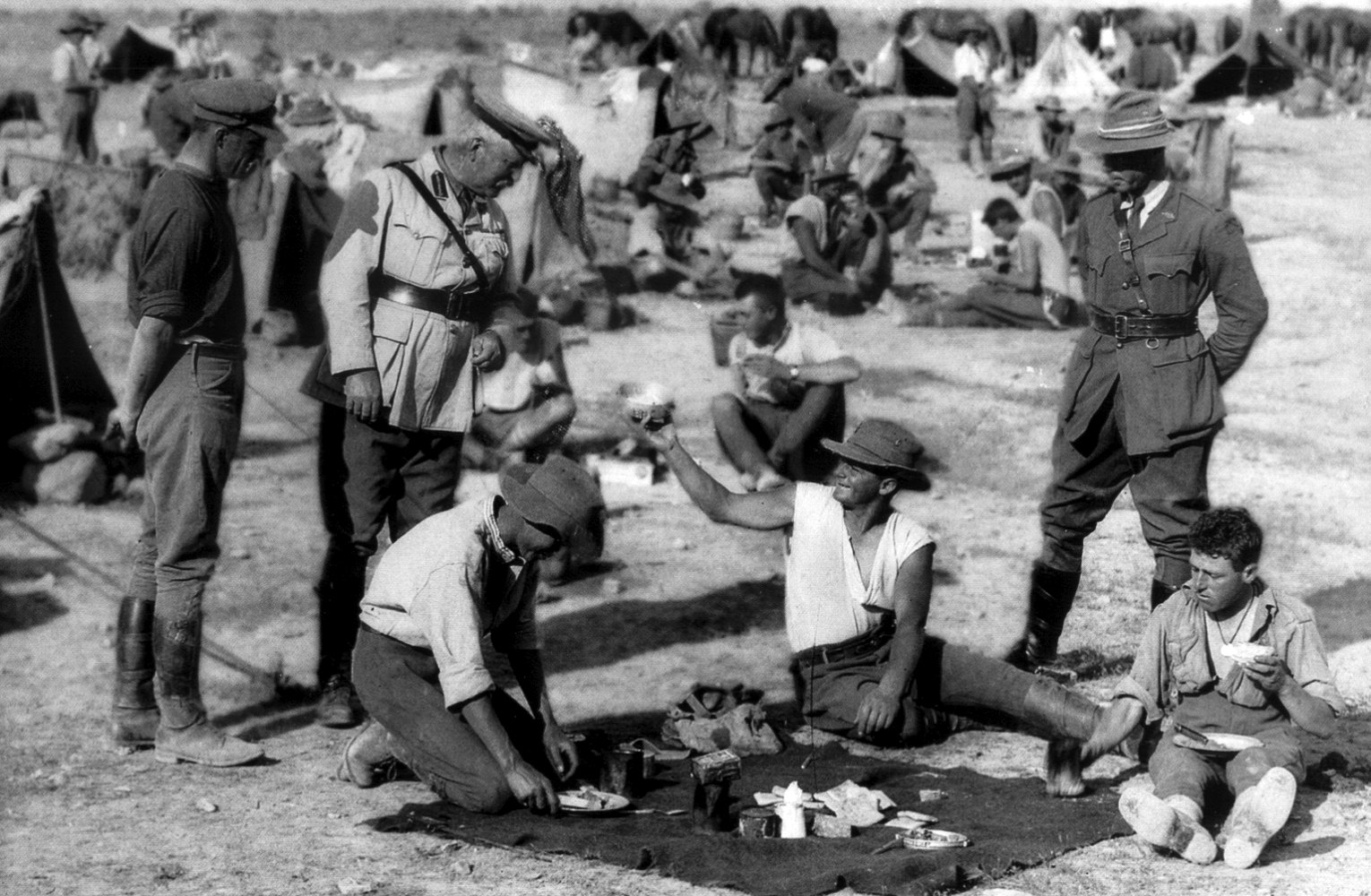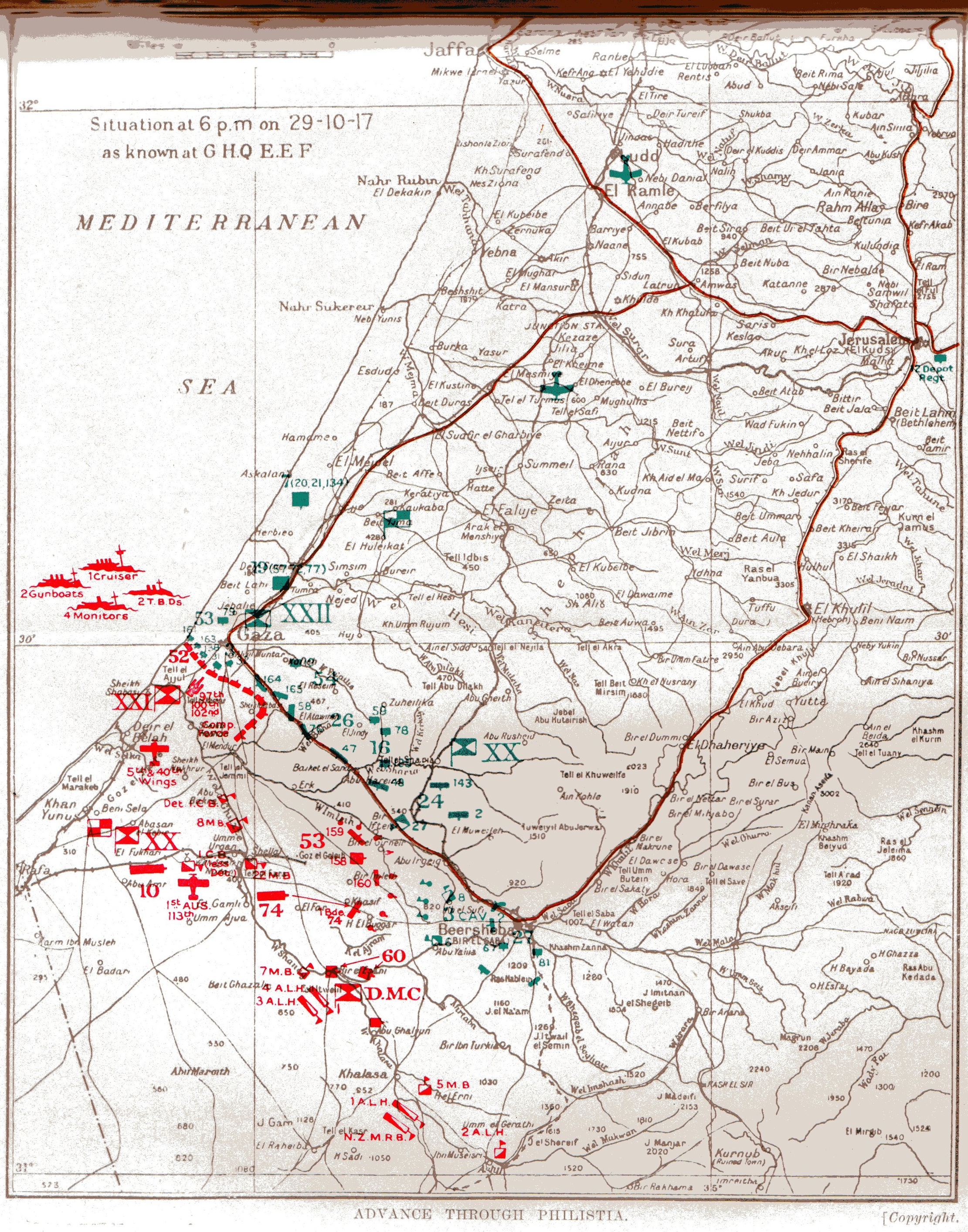|
Granville Ryrie
Major General Sir Granville de Laune Ryrie, (1 July 1865 – 2 October 1937) was an Australian soldier, politician, and diplomat. He served in the Boer War and the First World War, in the latter commanding the 2nd Light Horse Brigade (1914–1918) and ANZAC Mounted Division (1918–1919). His military career overlapped with his political career in the New South Wales Legislative Assembly (1906–1910) and Federal House of Representatives (1911–1927). He concluded his public service as High Commissioner to the United Kingdom (1927–1932), the first time the position had been held by someone other than a former prime minister. Early life Ryrie was born at Micalago, Michelago, New South Wales on 1 July 1865, into a farming family. His father was Alexander Ryrie, a grazier and member of the New South Wales Legislative Assembly (1880–91) and of the Legislative Council (1892–1909), and his mother was Charlotte, née Faunce, both born in New South Wales. Granville was educa ... [...More Info...] [...Related Items...] OR: [Wikipedia] [Google] [Baidu] |
Second Boer War
The Second Boer War ( af, Tweede Vryheidsoorlog, , 11 October 189931 May 1902), also known as the Boer War, the Anglo–Boer War, or the South African War, was a conflict fought between the British Empire and the two Boer Republics (the South African Republic and the Orange Free State) over the Empire's influence in Southern Africa from 1899 to 1902. Following the discovery of gold deposits in the Boer republics, there was a large influx of "foreigners", mostly British from the Cape Colony. They were not permitted to have a vote, and were regarded as "unwelcome visitors", invaders, and they protested to the British authorities in the Cape. Negotiations failed and, in the opening stages of the war, the Boers launched successful attacks against British outposts before being pushed back by imperial reinforcements. Though the British swiftly occupied the Boer republics, numerous Boers refused to accept defeat and engaged in guerrilla warfare. Eventually, British scorched eart ... [...More Info...] [...Related Items...] OR: [Wikipedia] [Google] [Baidu] |
Australian House Of Representatives
The House of Representatives is the lower house of the bicameral Parliament of Australia, the upper house being the Senate. Its composition and powers are established in Chapter I of the Constitution of Australia. The term of members of the House of Representatives is a maximum of three years from the date of the first sitting of the House, but on only one occasion since Federation has the maximum term been reached. The House is almost always dissolved earlier, usually alone but sometimes in a double dissolution of both Houses. Elections for members of the House of Representatives are often held in conjunction with those for the Senate. A member of the House may be referred to as a "Member of Parliament" ("MP" or "Member"), while a member of the Senate is usually referred to as a "Senator". The government of the day and by extension the Prime Minister must achieve and maintain the confidence of this House in order to gain and remain in power. The House of Representatives c ... [...More Info...] [...Related Items...] OR: [Wikipedia] [Google] [Baidu] |
New South Wales Legislative Assembly
The New South Wales Legislative Assembly is the lower of the two houses of the Parliament of New South Wales, an Australian state. The upper house is the New South Wales Legislative Council. Both the Assembly and Council sit at Parliament House in the state capital, Sydney. The Assembly is presided over by the Speaker of the Legislative Assembly. The Assembly has 93 members, elected by single-member constituency, which are commonly known as seats. Voting is by the optional preferential system. Members of the Legislative Assembly have the post-nominals MP after their names. From the creation of the assembly up to about 1990, the post-nominals "MLA" (Member of the Legislative Assembly) were used. The Assembly is often called ''the bearpit'' on the basis of the house's reputation for confrontational style during heated moments and the "savage political theatre and the bloodlust of its professional players" attributed in part to executive dominance. History The Legislativ ... [...More Info...] [...Related Items...] OR: [Wikipedia] [Google] [Baidu] |
Order Of The Nile
The Order of the Nile (''Kiladat El Nil'') was established in 1915 and was one of the Kingdom of Egypt's principal orders until the monarchy was abolished in 1953. It was then reconstituted as the Republic of Egypt's highest state honor. Sultanate and Kingdom of Egypt The Order was established in 1915 by Sultan Hussein Kamel of Egypt for award to persons who had rendered useful service to the country. It ranked beneath the Order of Ismail and was frequently awarded to British officers and officials serving in Egypt, as well as distinguished Egyptian citizens.The order comprised five classes: # Grand Cordon: Badge worn from a sash over the right shoulder, with a star on the left chest. # Grand Officer: Badge worn around the neck, with a smaller star on the left chest. # Commander: Badge worn around the neck. # Officer: Badge worn on the left chest from a ribbon bearing a rosette. # Knight: Badge worn on the left chest from a plain ribbon. Republic of Egypt After Egypt became a r ... [...More Info...] [...Related Items...] OR: [Wikipedia] [Google] [Baidu] |
Mentioned In Despatches
To be mentioned in dispatches (or despatches, MiD) describes a member of the armed forces whose name appears in an official report written by a superior officer and sent to the high command, in which their gallant or meritorious action in the face of the enemy is described. In some countries, a service member's name must be mentioned in dispatches as a condition for receiving certain decorations. United Kingdom, British Empire, and Commonwealth of Nations Servicemen and women of the British Empire or the Commonwealth who are mentioned in despatches (MiD) are not awarded a medal for their actions, but receive a certificate and wear an oak leaf device on the ribbon of the appropriate campaign medal. A smaller version of the oak leaf device is attached to the ribbon when worn alone. Prior to 2014, only one device could be worn on a ribbon, irrespective of the number of times the recipient was mentioned in despatches. Where no campaign medal is awarded, the oak leaf is worn direc ... [...More Info...] [...Related Items...] OR: [Wikipedia] [Google] [Baidu] |
Volunteer Decoration
The Volunteer Officers' Decoration, post-nominal letters VD, was instituted in 1892 as an award for long and meritorious service by officers of the United Kingdom's Volunteer Force. Award of the decoration was discontinued in the United Kingdom when it was superseded by the Territorial Decoration in 1908, but it continued to be awarded in some Crown Dependencies until 1930.North East Medals - The Volunteer Officers' Decoration (Accessed 28 June 2015) The grant of the decoration was extended in 1894 by the institution of a separate new decoration, the |
Companion Of The Order Of The Bath
Companion may refer to: Relationships Currently * Any of several interpersonal relationships such as friend or acquaintance * A domestic partner, akin to a spouse * Sober companion, an addiction treatment coach * Companion (caregiving), a caregiver, such as a nurse assistant, paid to give a patient one-on-one attention Historically * A concubine, a long-term sexual partner not accorded the status of marriage * Lady's companion, a historic term for a genteel woman who was paid to live with a woman of rank or wealth * Companion cavalry, the elite cavalry of Alexander the Great * Foot Companion, the primary type of soldier in the army of Alexander the Great * Companions of William the Conqueror, those who took part in the Norman conquest of England * Muhammad's companions, the Sahaba, the friends who surrounded the prophet of Islam Film and television * Companion (Doctor Who), Companion (''Doctor Who''), a character who travels with the Doctor in the TV series ''Doctor Who'' * Compan ... [...More Info...] [...Related Items...] OR: [Wikipedia] [Google] [Baidu] |
Knight Commander Of The Order Of St Michael And St George
The Most Distinguished Order of Saint Michael and Saint George is a British order of chivalry founded on 28 April 1818 by George IV, Prince of Wales, while he was acting as prince regent for his father, King George III. It is named in honour of two military saints, Michael and George. The Order of St Michael and St George was originally awarded to those holding commands or high position in the Mediterranean territories acquired in the Napoleonic Wars, and was subsequently extended to holders of similar office or position in other territories of the British Empire. It is at present awarded to men and women who hold high office or who render extraordinary or important non-military service to the United Kingdom in a foreign country, and can also be conferred for important or loyal service in relation to foreign and Commonwealth affairs. Description The Order includes three classes. It is used to honour individuals who have rendered important services in relation to Commo ... [...More Info...] [...Related Items...] OR: [Wikipedia] [Google] [Baidu] |
Battle Of Beersheba (1917)
The Battle of Beersheba ( tr, Birüssebi Muharebesi, ger, Schlacht von Birüssebi)The several battles fought for the Gaza to Beersheba line between 31 October and 7 November were all assigned the title Third Battle of Gaza, although they took place many miles apart, and were fought by different corps. [Battles Nomenclature Committee 1922 p. 32, Falls 1930 Vol. 2 Sketch Maps 1–9] was fought on 31 October 1917, when the British Empire's Egyptian Expeditionary Force (EEF) attacked and captured the Yildirim Army Group garrison at Beersheba, beginning the Southern Palestine Offensive of the Sinai and Palestine campaign of World War I. Infantry from the 60th (2/2nd London) Division, 60th (London) and the 74th (Yeomanry) Divisions of the XX Corps (United Kingdom), XX Corps from the southwest conducted limited attacks in the morning, then the Anzac Mounted Division (Desert Mounted Corps) launched a series of attacks against the strong defences which dominated the eastern side of Beers ... [...More Info...] [...Related Items...] OR: [Wikipedia] [Google] [Baidu] |
Third Battle Of Gaza
The Third Battle of Gaza was fought on the night of 1–2 November 1917 between British and Ottoman forces during the Sinai and Palestine Campaign of World War I and came after the British Egyptian Expeditionary Force (EEF) victory at the Battle of Beersheba had ended the Stalemate in Southern Palestine. The fighting occurred at the beginning of the Southern Palestine Offensive, and, together with attacks on Hareira and Sheria on 6–7 November and the continuing Battle of Tel el Khuweilfe, which had been launched by General Edmund Allenby on 1 November, it eventually broke the Gaza-to-Beersheba line defended by the Yildirim Army Group. Despite having held this line since March 1917, the Ottoman Army was forced to evacuate Gaza and Tel el Khuweilfe during the night of 6–7 November. Only Sheria held out for most of the 7 November before it too was captured.The several battles fought for the Gaza to Beersheba line between 31 October and 7 November were all assigned the t ... [...More Info...] [...Related Items...] OR: [Wikipedia] [Google] [Baidu] |





_Oak_Leaf_Cluster.jpg)

